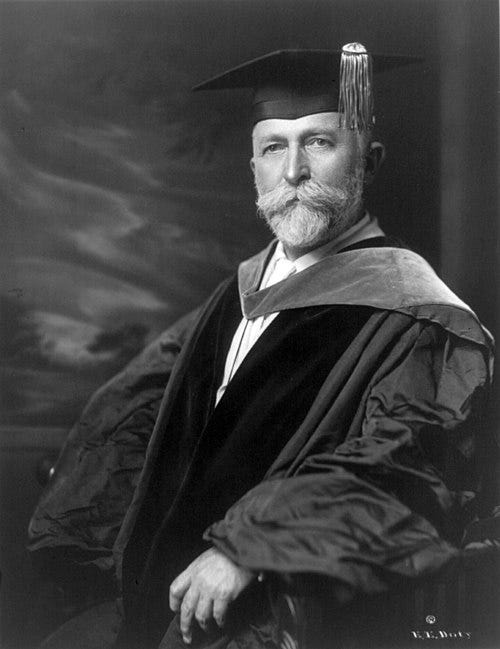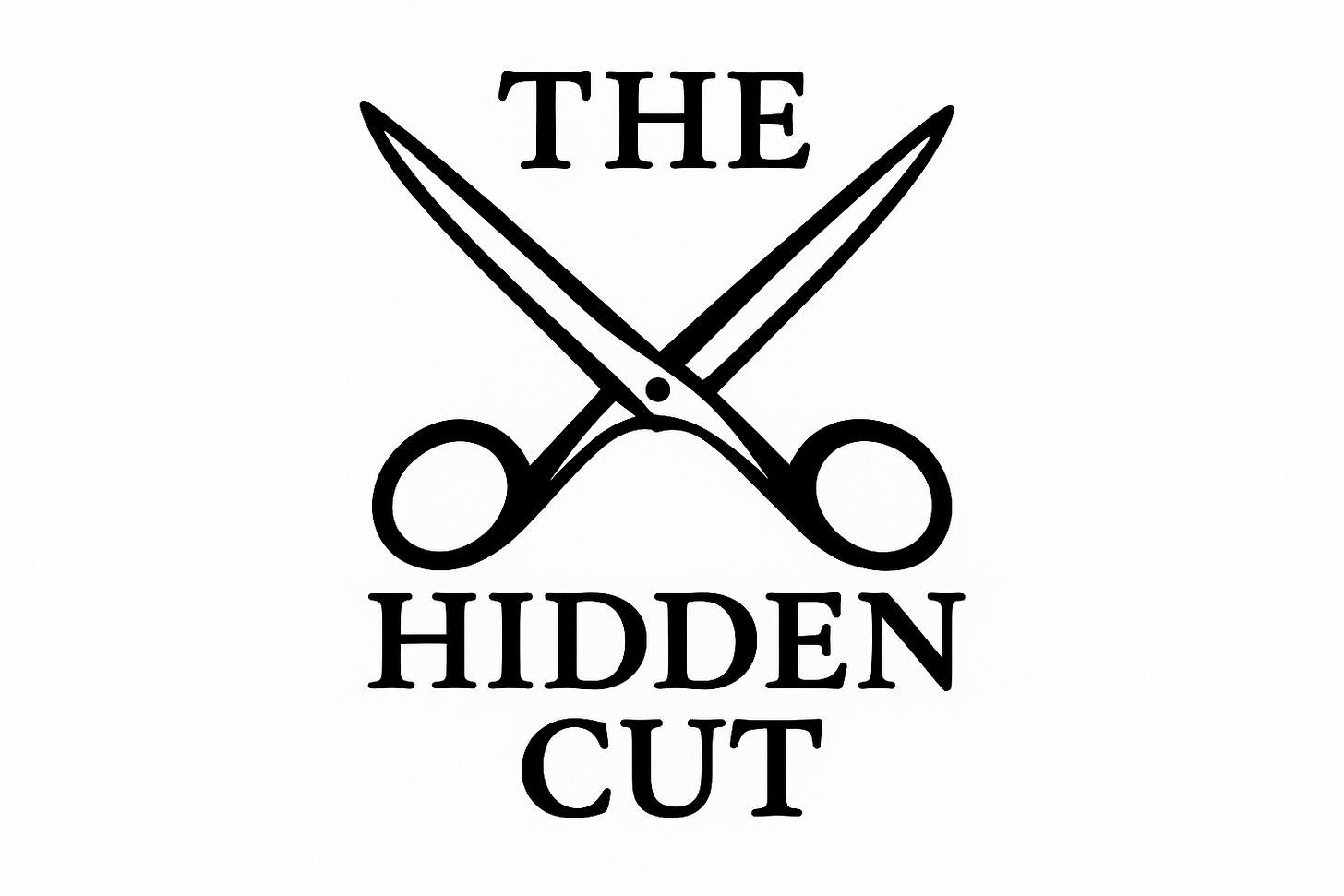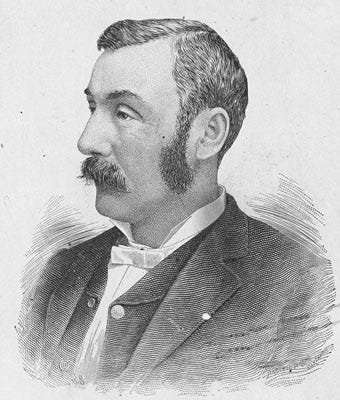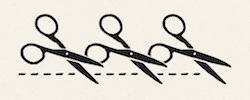The Hidden Cut – S1E1: The First Cut
A Strange American Secret Hiding in Plain Sight
You grow up assuming your body is yours. That the people around you—your family, your doctors, your culture—made decisions in your best interest.
But what if one of those decisions was irreversible?
What if you never even knew it was optional?
This is The Hidden Cut. I’m Lisa. And this is a story about silence, consent, and the most normalized medical ritual in American history.
Click here to listen to the audio podcast.
The Norm You Never Questioned
I didn’t set out to investigate circumcision. But one day, I found myself asking why so many American men had this one thing in common—something that wasn’t true for men in most of the world.
Perhaps I had simply heard one too many jokes about uncircumcised penises.
Or maybe it was that I had learned about male friends my age who had been adamant in their decision not to circumcise their sons, even though they themselves had been circumcised.
Or maybe, it was the fact that I was an American woman in my forties, questioning why I had struggled to break through in Hollywood as a TV writer after two decades of trying.
I was looking for answers to everything that didn’t make sense to me.
And once I started asking questions, I found a history of silence that stretched far beyond the delivery room.
I wanted to know just how common this was. So I started digging.
What I found was this: In the United States, over 80% of men born between 1970 and 2000 were circumcised as newborns.
In countries like Germany, Sweden, or Japan? The rate is close to 0%, unless it’s religious. I was shocked.
That difference isn’t just cultural. It’s structural. It’s medical. And—more often than not—it’s unquestioned.
The very fact that the term “uncircumcised” describes the penis in its natural, untouched form as something missing a necessary procedure has massive social implications.
Why wouldn’t we just call it…a penis? And then save the identification of those that had been surgically treated as “circumcised?”
Don’t they just say “fries” in France? We already know they’re French. Nobody needs reminding. And yet, here we are—calling uncut penises “uncircumcised,” because they apparently have something they’re supposed to be missing.
Most American parents think they’re making a neutral health decision. But is it really?
Prior to asking myself these questions these past several years, I realized I hadn’t given it much thought. Mostly because nobody around me seemed to be questioning it. I’d never been in a position to make that decision to begin with.
I guess I assumed that the choice of whether or not to circumcise your son in America was handed to the parents, and that ultimately, they felt empowered to make this judgement based on…well, to be honest, I wasn’t totally sure.
Why were so many American men circumcised?
I understood—from all the television shows and movies featuring Jewish characters—that it was a cultural practice tied intrinsically to their religion.
I was aware that Muslim men also practiced circumcision, but I vaguely understood it wasn’t always a religious requirement.
So, when it finally dawned on me to ask why most Christian and secular American men I knew were circumcised without a religious reason, I was shocked.
In fact, it seemed antithetical to what I had learned growing up as an American woman, the daughter of a red-blooded American man. I couldn’t envision that an entire population of men like my father would voluntarily submit to a practice that, everywhere else, was viewed as a religious ritual, rather than a mundane medical procedure hardly worth raising an eyebrow over.
I couldn’t help but picture those rowdy colonial Americans, flinging tea into the Boston Harbor just to make a point about “taxation without representation.”
Quite frankly this whole situation was quickly starting to sound like a “surgical operation without representation” to me.
I thought about how the American woman was raising her voice to assert the right to choose what to do with her body—and how, at the very same moment in history, that right had already been taken from American men, in infancy.
To steal the narrative style of arguably the most well-known fictional expert in penises, uncircumcised and otherwise, Carrie Bradshaw, I couldn’t help but ask myself:
“Wait, what else did we just accept without thinking?”
The Historical Setup
To understand how this all started, we have to go back and take a look at a few key figures in American history—three men whose strange, intersecting ideas laid the foundation for circumcision’s sharp rise (and eventual fall) among Christian and secular men in the United States.
This is a story about sex, shame, superiority—and the power of a scalpel in the hands of men who believed they were saving society, whether or not it had consented to its rescue.
John Harvey Kellogg – The Moralist
Our first stop is Battle Creek, Michigan, in the late 1800s.
Dr. John Harvey Kellogg—yes, the cornflakes guy—ran a sanitarium where he preached the gospel of health, bland food, and sexual purity.

Kellogg believed masturbation was the gateway to all kinds of degeneracy. And circumcision? That was his solution.
But not just any circumcision. He recommended it be done without anesthesia, so the boy would associate pain with touching himself.
“The remedy for masturbation is circumcision. The operation should be performed by a surgeon without administering anesthetic, as the brief pain attending the operation will have a salutary effect upon the mind.”
—Dr. John Harvey Kellogg, 1888
This wasn’t medicine. This was punishment disguised as purity. Intentional disfigurement of God’s temple to keep the devil away. For Kellogg, the foreskin wasn’t just skin—it was sin.
Peter Charles Remondino – The Racialist
While Kellogg was fixated on morality, another doctor was making the case for circumcision as a tool for racial and civilizational uplift.
Enter: Peter Charles Remondino.
Remondino wrote breathless essays about how Jewish circumcision was proof of their superior intellect and hygiene. He wasn’t Jewish—he was just obsessed with the idea that circumcision elevated men.
He believed it made them smarter, healthier, and more "refined." He even argued that Jewish circumcision made the race itself more advanced.
“The Jews have given the world a sanitary rite.
Circumcision elevates the race, both mentally and physically.”
-Dr. Peter Charles Remondino, 1891
Aspirational eugenics in a lab coat. Carving one’s self into the image of one’s perceived superior.
This begged the question: Why would non-Jewish men want to appear Jewish?
Who could this possibly benefit?
Dr. Lewis Sayre – The Medicalizer
And then there’s Dr. Lewis Sayre—the Protestant Episcopalian who gave circumcision its medical halo.
In 1870, Sayre circumcised a partially paralyzed 5-year-old boy and claimed the child could walk again afterward. He believed a tight foreskin caused “reflex neuroses”—a kind of nerve disorder—and suddenly, circumcision became a treatment for… well, everything.
Spinal problems. Epilepsy. Mental illness.
No clinical trials. No control group. Just a miracle story and a powerful title.
“The irritation produced by a long and adherent prepuce may
give rise to a great variety of reflex disorders, which may be
relieved by a very simple operation.”
— Dr. Lewis Sayre, 1870
He wrote this after treating the partially paralyzed boy whose recovery he credited to circumcision, and it distills his entire framework into one chillingly confident sentence:
A mysterious disorder? Blame the foreskin. Cut it off. Problem solved.
Sayre helped transform circumcision from a fringe moral punishment into a respectable medical intervention.
He wasn’t curing disease—he was inventing it.
And Americans, weary from a costly second World War and traumatized from Holocaust scenes both in news reels and real life as boots-on-the-ground soldiers, weren’t feeling particularly energized to push back against a postwar medical establishment shaped in part by the growing presence of Jewish physicians—many of whom had grown up with circumcision as a sacred, unquestioned rite.
And in this new, postwar medical culture, circumcision just… stayed.
It wasn’t questioned. It wasn’t debated. It was folded into hospital protocol. Quietly. Permanently.
Not because it was medically necessary… but because by then, it had become culturally invisible.
A ritual now wearing a lab coat.
These three men—Kellogg, Remondino, and Sayre—are the white knights in white lab coats who took it upon themselves to ride in on white horses to save horny American men from themselves.
Only instead of jousts and swords, they brandished scalpels and a glaring lack of medical proof.
And their ideas stuck around—quietly, invisibly—until eventually, they weren’t questioned at all.
But it still begs the question: Why were Americans so afraid in the first place? Why did masturbation become the national moral emergency? Why were men so eager to cut away a part of themselves they didn’t even understand?
I don’t think this was just about fear of sin or skin. I think it was something deeper. Something quieter. Something hiding in plain sight.
The Crack in the American Psyche
Let’s take a look at the effect of industrialization and the influence of Victorian sexual repression on the American public at the time. The 1800s brought the rise of cities, wage labor, crowded apartments, and fewer communal spaces. People were increasingly alone—living anonymously in cities outside the family unit—but also on top of each other.
Imagine the level of tension—sexual and otherwise—that must have been psychically brewing in these warehouses of souls. By this point, Americans had developed a distinct cultural identity—one rooted in space, independence, and the promise of a life unbound by European tradition.
Entire generations now identified solely with that untamed sense of freedom, many of whom had never crossed the Atlantic or experienced the dense, communal bustle of a European capital.
But the very space that once defined them was beginning to close in—cities were growing, privacy was shrinking, and something in the American psyche was starting to crack.
So, you can imagine the level of wild energy festering in these new cities—pulsating urban hot spots—now crackling with frustration, loneliness and unresolved anger for this new way of life.
Victorian ideals of sexual purity and middle-class discipline exploded. Masturbation became the ultimate fear—a sign that someone was undisciplined, overstimulated, and unfit for society.
Christian reformers were baited by their own fears. They saw vice (especially sexual vice) everywhere. And in their obsession with “moral cleanliness,” they embraced a solution—circumcision—that had roots in a religious practice they didn’t understand, driven by pseudoscience they didn’t question.
As a result, they ended up promoting a practice they would have historically rejected if they had recognized it as a Jewish religious ritual, rebranded as “modern medicine.”
In the end, it wasn’t sin or sickness they were trying to cut away. It was loneliness. And what they didn’t realize… was that it would never stop growing back.
America the Outlier
To understand just how deeply this practice took root in the U.S., we have to widen the lens.
In Europe, circumcision is rare. In Japan? Nearly nonexistent. In Latin America? It’s a cultural curiosity.
But in the United States? It’s standard. Quiet. Institutional. Default.
Let’s break that down.
In Germany, the circumcision rate for non-religious reasons is under 10%.
In France—even lower.
In Japan and South Korea, the procedure was never adopted outside of religious or American military influence.
In the UK, the National Health Service hasn’t covered routine infant circumcision since the 1940s.
And yet, here in the U.S., hospitals continued the practice for decades without parental consent forms, without full disclosure, and without much public debate.
In fact, we are the only industrialized nation where circumcision became not just common—but routine.
“Growing up in Europe, we never even thought about it. It wasn’t a thing. American movies always made uncut guys sound like they were weird—but where I’m from, it’s the other way around.”
-Anonymous
This makes America an outlier. Not because we adopted a foreign ritual—but because we medicalized it, sanitized it, and then forgot we ever made the choice.
Or, perhaps, we never realized that the choice had been made for us.
And that’s when it becomes dangerous—not when something is debated, but when it’s assumed.
There’s a certain kind of silence that settles in when no one even remembers there was a conversation to be had.
The Real Question
The more I read, the more I kept circling back to one question:
If this wasn’t medically necessary…
If this wasn’t rooted in consent…
If this wasn’t even religious for most people…
Then what was it?
Was it a sacrifice to the gods of modernity?
A desperate attempt to assert control over the chaos of a changing world?
Or maybe just… a spell. A ritual. A way to say: “We’re clean now. We’ve been civilized. We are better than we were.”
But here’s the real cost—beneath the silence, beneath the statistics:
What happens when entire generations never know they had a choice?
What happens when the body you were born with is quietly altered before you could speak?
When modern mainstream American culture tells you there’s only one way to be normal—and that way begins with a blade?
What happens when we normalize a surgery so thoroughly that to question it is to be mocked?
I don’t have all the answers. But I know this: silence has a cost. And someone always pays it.
It’s time for Americans to start asking who’s been footing the bill.
This isn’t just a story about circumcision. It’s a story about trust. About consent. About how something can be everywhere… and yet remain completely invisible.
Maybe this is a story about a crime. And maybe the villain isn’t a person at all…
But a machine—quietly powered by our own exploitation.
In the next episode, we’ll look at how American mainstream media shaped our understanding of the “normal” male body—and what the laugh tracks were really covering up.
Until then, I’m Lisa. And this… is The Hidden Cut—a series about what’s been removed, revised, and left on history’s cutting room floor.
✂️ Ready to go deeper?
Subscribe now for early access to upcoming episodes, exclusive essays, and entry into The Vault (coming soon).🗂️ Episodes 2 and 3 are already available—as both essays and audio—for paid subscribers.
The Hidden Cut is a seven-part series exploring the most normalized medical ritual in American history—and what happens when we finally ask why it was ever accepted.
This is only the beginning.
Come follow the thread.
Further Reading & Receipts
The following sources informed this episode and offer additional context for the themes, history, and cultural analysis explored in “A Strange American Secret Hiding in Plain Sight.” Dive deeper, follow the paper trail, and question everything that was edited out of the mainstream narrative.
Primary Historical Sources
Dr. John Harvey Kellogg, Plain Facts for Old and Young, 1888
His infamous recommendation to perform circumcision without anesthesia appears in this book. It’s a chilling look at how moral panic can masquerade as medical advice.
https://archive.org/details/plainfactsforol00kellgoogPeter Charles Remondino, History of Circumcision from the Earliest Times to the Present, 1891
A bizarre eugenic treatise filled with racialized theories about circumcision’s benefits. He genuinely believed it was a sign of civilizational superiority.
https://www.gutenberg.org/ebooks/23135Dr. Lewis Sayre, Partial Paralysis from Reflex Irritation Caused by Congenital Phimosis, 1870*
The medical paper that launched circumcision as a reflex cure-all in America. Sayre’s patient “miracle” helped normalize the practice.
https://www.cirp.org/library/history/sayre/
Cultural & Historical Context
David L. Gollaher, "From Ritual to Science: The Medical Transformation of Circumcision in America" - Journal of Social History in Fall 1994 (Vol. 28, No. 1, pp. 5–36).
This article explores the historical shift of circumcision from a ritualistic practice to a medicalized procedure in the United States.
https://www.cirp.org/library/history/gollaher/Circumcision: A History of the World's most Controversial Surgery by Tim Stokes
A comprehensive account of circumcision across cultures, including the rise of American routine infant circumcision.
https://pmc.ncbi.nlm.nih.gov/articles/PMC1119872/Intact America – Resource Center
Offers a comprehensive collection of materials aimed at educating the public about the ethical, medical, and cultural aspects of circumcision. Features white papers, survey data, fact sheets, talking points, and curated reading lists that delve into the historical and contemporary debates surrounding male genital cutting.
https://intactamerica.org/resources/#white-papers
🎬 Continue the Series
→ Next Episode: Comic Cuts
📂 Full Episode Guide: Cold Open
Think something got left on the cutting room floor?
Add your notes below—we’re still editing in real time.











https://www.linkedin.com/pulse/ai-hallucinations-frequency-failure-exploitation-neil-sahota-ozcee